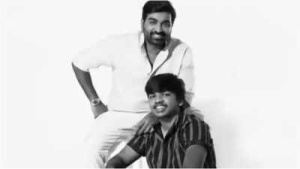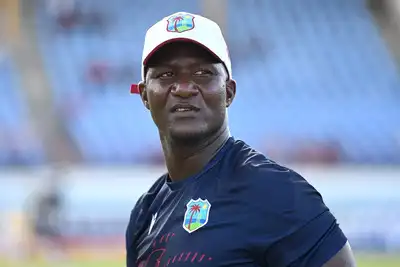Love knows no boundaries, but in Bollywood, it often collides with them. From clashing family values to cultural differences, the Hindi film industry has long used inter-state and inter-cultural romances as fertile ground for drama, humor, and emotional conflict. Whether it’s a North Indian boy falling for a South Indian girl or lovers hailing from different castes, these stories have not only entertained but also mirrored India’s diverse social fabric.
As Sidharth Malhotra and Janhvi Kapoor gear up to bring another such tale alive in Param Sundari, where a Punjabi munda falls for a Malayali beauty,the time feels ripe to revisit how Bollywood has embraced cross-country love stories over the decades.
The Pioneers: Ek Duuje Ke Liye (1981)
If there is one film that truly set the template for Bollywood’s cultural clash romances, it is K. Balachander’s classic Ek Duuje Ke Liye. Featuring Kamal Haasan and Rati Agnihotri, it told the story of a Tamil boy and a North Indian girl whose romance faces severe resistance from both families.
What made the film stand out was not just its poignant narrative but also its rootedness in reality. The cultural stereotypes, the linguistic barriers, and the parental opposition,all mirrored the actual challenges faced by inter-regional couples in India. The film ended tragically, but its lasting impact lies in how it spotlighted the deep cultural divides in Indian society. Even four decades later, Ek Duuje Ke Liye remains a benchmark for Bollywood love stories that transcend borders.
Lighthearted Take in the 1990s: Hum Hain Rahi Pyar Ke (1993)
The 1990s brought a lighter, more comedic spin to inter-cultural romance. Mahesh Bhatt’s Hum Hain Rahi Pyar Ke featured Juhi Chawla as Vyjayanti, a spirited Tamilian girl who runs away from her orthodox family and ends up living with Aamir Khan’s Rahul Malhotra. Amid the chaos of children, cultural misunderstandings, and comic clashes, love blossoms.
Unlike Ek Duuje Ke Liye, which leaned on tragedy, this film embraced warmth and humor, suggesting that love could triumph even in the face of rigid traditions. At its heart, the film conveyed a progressive message about acceptance and love across boundaries.
The Comedy Era: Chennai Express (2013)
By the 2000s, India was changing rapidly, and so was Bollywood. The globalization wave meant that cultural diversity was now celebrated rather than shunned. Rohit Shetty’s blockbuster Chennai Express capitalized on this shift.
In the film, Shah Rukh Khan’s Rahul meets Deepika Padukone’s Meenalochni Azhagusundaram while on his way to immerse his grandfather’s ashes. What follows is a madcap journey through Tamil Nadu, with Rahul caught between comic villains, culture shocks, and his growing love for Meena.
The film, though exaggerated in its portrayal of South Indian stereotypes, became a massive hit because it fused Bollywood’s masala entertainment with the theme of cultural integration. Deepika’s performance, her gajra, her accent, her feisty demeanor added authenticity and charm. Chennai Express was less about conflict and more about celebrating love amidst diversity, marking a tonal shift in how Bollywood treated inter-state romances.
Relatable Modern Drama: 2 States (2014)
Chetan Bhagat’s best-selling novel found its cinematic avatar in Abhishek Varman’s 2 States, starring Arjun Kapoor and Alia Bhatt. Unlike the dramatic tragedies of the past, 2 States explored inter-cultural romance in a contemporary, relatable fashion.
Krish, a Punjabi boy, falls for Ananya, a Tamilian girl, at IIM Ahmedabad. Their romance is easy, but the real challenge begins when they try to convince their families. The film beautifully captures the awkwardness of cultural clashes between Punjabi boisterousness versus Tamil conservatism while also touching upon issues of identity, respect, and compromise.
What made 2 States special was its balance of humor and realism. It didn’t trivialize cultural differences but showed how modern couples navigate them with patience and persistence. With a box office gross of over ₹100 crore, it proved that audiences were ready to embrace love stories that reflected India’s evolving social dynamics.
The Present: Param Sundari (2025)
And now comes Param Sundari, the latest addition to Bollywood’s long list of cross-cultural love sagas. The film stars Sidharth Malhotra as a charming Punjabi lad who falls head over heels for Janhvi Kapoor’s Malayali girl from Kerala.
This pairing feels refreshing because while Bollywood has often showcased Punjabi-Tamil or Punjabi-Maharashtrian clashes, the Punjabi-Malayali dynamic is relatively unexplored. The vibrancy of Punjabi culture, its loudness, music, and zest for life contrasts sharply with Kerala’s rich traditions, understated lifestyle, and cultural depth.
Why Cross-Cultural Love Stories Work in Bollywood
- Conflict & Drama: Cultural differences naturally create tension, the perfect fuel for cinematic drama.
- Humor: From accents to customs, Bollywood often uses cultural quirks as comic relief.
- Music & Dance: These films allow for a rich fusion of styles—think Punjabi dhol meets South Indian nadaswaram.
- Progressive Messaging: They subtly challenge social prejudices and promote the idea of national unity through love.
From the tragic ending of Ek Duuje Ke Liye to the cheerful optimism of 2 States, Bollywood’s cross-cultural love stories have evolved with the times. They continue to strike a chord because they celebrate not just love, but also India’s diversity.
As Sidharth Malhotra and Janhvi Kapoor bring a fresh Punjabi-Malayali pairing to life in Param Sundari, one thing is certain: Bollywood’s love affair with love across borders is here to stay. After all, if there’s one universal truth in Indian cinema, it is that love—no matter how complicated—always finds a way.
"Get the latest updates on Times of India, including reviews of the movie Coolie and War 2."
 Wimbledon 2025: Streaming Guide for India & US Viewers - Dates, Prize Money & New Tech
Wimbledon 2025: Streaming Guide for India & US Viewers - Dates, Prize Money & New Tech
 Greg Chappell: Rishabh Pant is Redefining Cricket with His Fearless Batting
Greg Chappell: Rishabh Pant is Redefining Cricket with His Fearless Batting
 Vijay Sethupathi Responds to Controversy Surrounding Son Surya's Film Debut 'Phoenix'; Apologizes if Anyone Was Hurt
Vijay Sethupathi Responds to Controversy Surrounding Son Surya's Film Debut 'Phoenix'; Apologizes if Anyone Was Hurt
 Smith Set for Second Test Comeback After Unique Baseball Cage Recovery
Smith Set for Second Test Comeback After Unique Baseball Cage Recovery
 Spotting Prediabetes: Key Warning Signs Your Body May Be Sending
Spotting Prediabetes: Key Warning Signs Your Body May Be Sending
 JPG to PDF: A Graphic Designer's Guide to Conversion on Desktop and Mobile
JPG to PDF: A Graphic Designer's Guide to Conversion on Desktop and Mobile
 Daren Sammy Fined for DRS Criticism After West Indies-Australia Test
Daren Sammy Fined for DRS Criticism After West Indies-Australia Test
 Google Unveils Strategy to Bolster 2024 Indian Elections: Combating Misinformation and Promoting Voter Access
Google Unveils Strategy to Bolster 2024 Indian Elections: Combating Misinformation and Promoting Voter Access
 Tiêu đề:
Oral Cancer: Know the Signs, Risk Factors, and Why Early Detection is Critical
Tiêu đề:
Oral Cancer: Know the Signs, Risk Factors, and Why Early Detection is Critical
 X Cracks Down: Half a Million Indian Accounts Suspended for Policy Breaches
X Cracks Down: Half a Million Indian Accounts Suspended for Policy Breaches